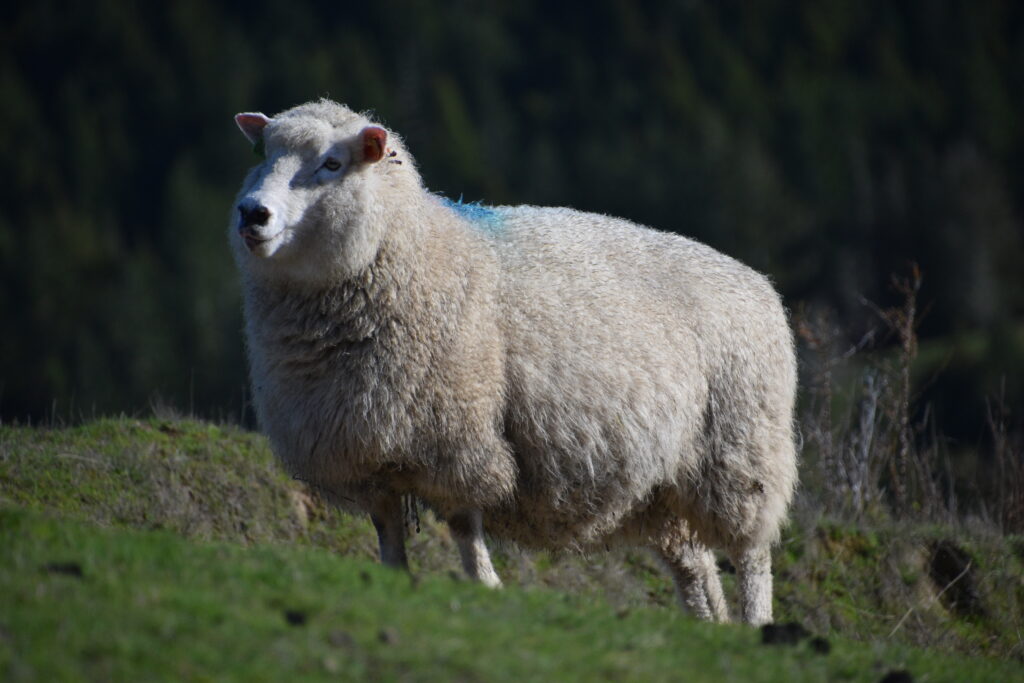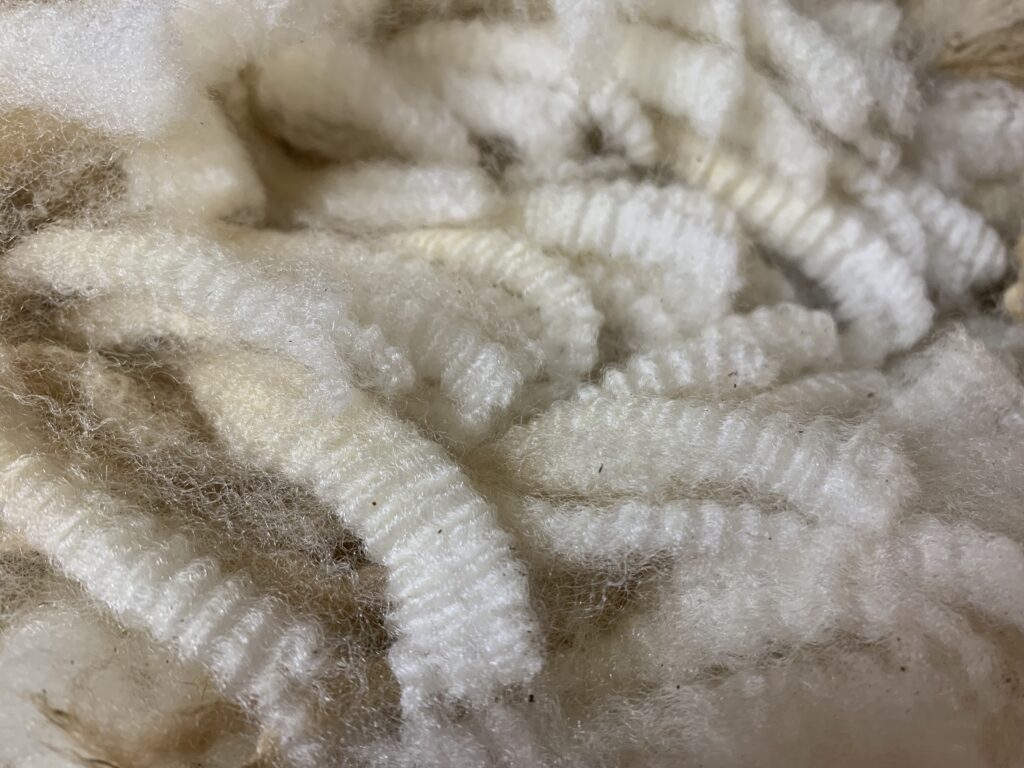Sheep. The build and character of Perendale sheep owes a great deal to its Border Cheviot heritage as a “hill breed”. As the North American Perendale Association is of the firm opinion that purebred, registered Perendales should be “production” sheep, valued for attributes such as ease of lambing, excellent mothering skills, parasite resistance, thriftiness, and meat quality, we hesitate to stipulate desirable attributes with respect to appearance that might encourage their popularity as “show sheep”. Indeed, originating as it did as a cross between Border Cheviots and Romneys, some individuals within this breed may be more “Cheviot” while others are more “Romney” in appearance. That being said, most Perendales are medium in size (adult ewes averaging 140-180 lb; rams 200-250 lb), with fleeces in the 11-lb range. Faces are usually clean, often with a “topknot”. A common characteristic is that shoulders are narrow at the top, with fairly prominent withers, and an upright carriage to the head. The small shoulders and head of their Cheviot ancestors contributes to the ease of lambing of Perendales. A slight slope at the tailhead is common, providing a sheep with freedom of movement that allows it to be an active forager.

Fleece. The length of Perendale fleece (typically 5-6”) is consistent with their classification as a “longwool” breed, although some judges prefer to classify their fleeces as “medium”. “Should it be classed as a medium fleece or a longwool fleece?” is a perennial question, the answer to which does not depend solely on fiber diameter. The micron count (~27-35 microns) is towards the finer end of the spectrum (31-40+ microns) for the longwool category. This fiber diameter range is intermediate between that of a typical Cheviot (27-33 microns) and a typical Romney (32-39 microns). The finer micron count of a Perendale fleece (relative to most Romney fleeces) confers greater softness than is characteristic of Romney fleeces; most Perendale lamb fleeces, and even many adult ewe fleeces, are “next to the skin soft”.
A Perendale fleece has a longer staple length than a typical Cheviot fleece, with a characteristic clear, even crimp different from the three-dimensional crimp of Cheviot fleeces; the crimp is also somewhat finer than that of a typical Romney fleece, consistent with the finer fiber diameter. A Perendale fleece should open cleanly, and should be consistent in type. The lock should be definite and meaty, with even crimp throughout the staple and moderate luster. The handle should be full and springy. The fleece should be free from hair and kemp.
The Fleece and Fiber Sourcebook (Robson and Ekarius, 2011) describes Perendale fiber as follows: “Perendale is a bouncy wool, which will spin up with a spring to it, as opposed to the compact sleekness of other (mostly English) longwools. This lofty quality can add warmth to sweaters (for the finer ranges) or cushioning qualities to rugs (for the stronger wools)…This fleece will take dyeing well, although without the shiny quality of other longwools…The fiber tends to capture air and bounce, so even full worsted spinning will give you loft in the finished yarn. The yarn’s slightly crisp quality should help texture patterns show up nicely in knitted or woven textiles”. It further notes that there are both finer and coarser ranges within the breed, and that NZ fleeces are moving toward the coarser end of things. Nonetheless, some NZ studs are still selecting for finer wool. Many of the NZ rams from which semen was imported to the US have been chosen with wool quality (among other factors) in mind.

Yearling fleece from White 2101, a ewe lamb conceived via AI with semen imported from NZ. This fleece won second place in the “Longwool – White” division at the Maryland Sheep and Wool Festival in 2022. Photo credit: L. Roberts, Lucky Lane Farm.